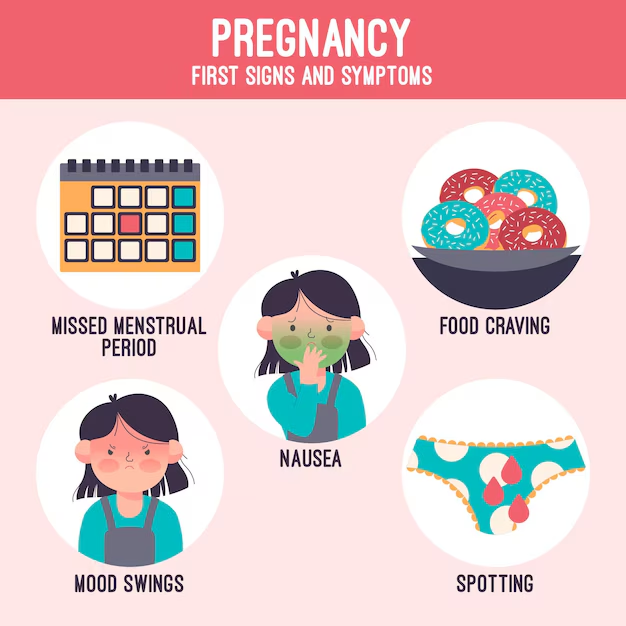Knowing your boundaries

Understanding and honoring your boundaries is a key part of living well—especially during your menstrual cycle. Your body, hormones, and emotions go through various shifts throughout the month. These changes affect how you feel physically, emotionally, and even sexually. Knowing your boundaries isn't about restriction; it's about empowerment. When you track your cycle and stay in tune with your body, you give yourself the ability to make informed, respectful, and loving choices—especially when it comes to intimacy and sexual health.
Why Boundaries Matter
The menstrual cycle isn’t just about periods. It’s a 28 to 35-day (on average) hormonal journey that impacts everything from your energy levels to your mood to your libido. If you ignore your natural signals, you may find yourself feeling overwhelmed, exhausted, or disconnected from your partner and even from yourself.
Boundaries help create a safe, respectful space for you to thrive. Whether it's saying no to intimacy when you're not in the mood, asking for alone time when you need it, or communicating your physical and emotional needs—boundaries protect your well-being.
How Your Cycle Affects Intimacy
Each phase of your cycle can influence how you feel about touch, closeness, and sexual activity. Understanding these phases can help you plan for—and communicate—your needs more effectively:
-
Menstrual Phase (Day 1–5)
You might feel more withdrawn, tired, or in need of personal space. Some people find intimacy soothing during their period, while others prefer complete rest. Listen to your body and express your preferences honestly. -
Follicular Phase (Day 6–14)
Energy rises, libido may increase, and you might feel more open to new experiences. This is often a good time for physical connection and exploring desires. -
Ovulation Phase (Around Day 14)
This is typically the peak of sexual desire due to a surge in estrogen and luteinizing hormone. If you’re not trying to conceive, this is a time to be extra aware of contraception. It’s also a great time to engage in intimate activities that make you feel confident and connected. -
Luteal Phase (Day 15–28)
PMS symptoms may begin to show up. Mood swings, fatigue, or sensitivity may lead you to need more emotional support than physical touch. Communicating this shift is crucial for healthy intimacy.
Tracking Your Cycle to Set Boundaries
Keeping track of your menstrual cycle is one of the most powerful tools you have. Use a period tracker app or a journal to monitor not just your physical symptoms, but also how you feel emotionally and sexually. Note your energy levels, your desire for intimacy, or any discomfort during certain phases.
Over time, you'll start to recognize patterns and anticipate your needs. This self-awareness is the foundation for setting meaningful boundaries.
Communicating Your Boundaries
Here’s how to make conversations about intimacy and your cycle more natural and respectful:
-
Be honest: Say how you feel. “I’m in my luteal phase and feeling low energy, can we cuddle instead of anything more tonight?”
-
Be clear: Boundaries work best when they are specific. “During my period, I prefer not to be sexually active.”
-
Be open: Let your partner ask questions and share their feelings too. It’s about building mutual understanding and respect.
-
Be consistent: Track your cycle and share your insights regularly to keep communication flowing.
Respecting Others' Boundaries Too
Just as you have needs and changes during your cycle, so do others. Intimacy is a two-way street. Pay attention to your partner's boundaries, listen actively, and be empathetic. This mutual respect deepens trust and emotional safety in your relationship.
Conclusion
Knowing your boundaries—and sharing them—is an essential act of self-care and intimacy. By tracking your menstrual cycle and understanding your body’s natural rhythms, you gain a deeper connection with yourself. That connection empowers you to make decisions about your sexual health and relationships that feel right and respectful.
Living well through your cycle means living mindfully. It means saying yes when it feels right, no when it doesn’t, and always choosing love—starting with yourself.
Related Articles

Talking openly with your partner

How movement boosts mood

Things to avoid during pregnancy

Self-kindness when you’re not at 100%

Staying hydrated for skin health

Practicing gratitude or affirmations

Enhancing Fertility and Conception: Your Complete Guide to Getting Pregnant

Common Symptoms in the First Trimester and How to Manage Them